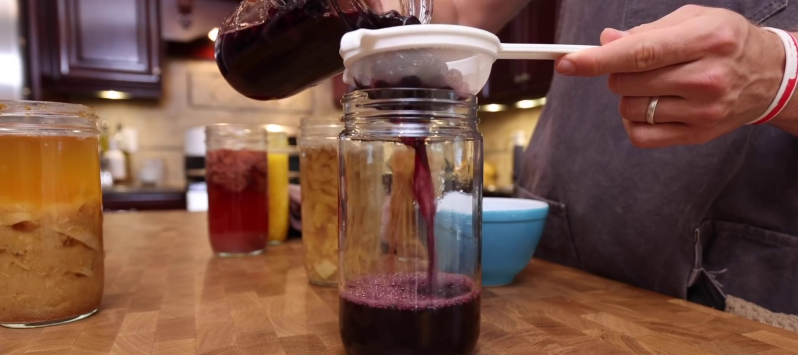
Making fermentation work for us is one of the original hacks that allowed humans to make food last longer, and festivities more interesting. [Mike G] has been experimenting with making his own vinegar, and found the end product to be a delicious addition to his cooking.
The first step is similar to making alcoholic beverages. Take something that contains sugar, like fruit, mix it with water and let stand. Wild yeast will feed on the sugar and create alcohol. Once the alcohol content reaches the 6-12% range, the resulting liquid can be separated from the solids and left exposed to the air. This allows Acetobacter bacteria to convert the alcohol into acidic acid, producing vinegar. The entire process takes around 30 days.
[Mike]’s first round of experiments was mainly with fresh fruit, with the addition of raisins. To prevent white mold from forming the mixtures should be stirred daily, but life got in the way and mold got out of control on all the fruits, except for the raisins. This gave [Mike] the to try another round with dried fruit, which was significantly less prone to mold, and produced deliciously flavored vinegar. [Mike] also demonstrated their use in a couple of mouth-watering dishes.
The DIY vinegar production process is just begging for some fermentation monitoring and automation tech. We’ve seen plenty of sourdough and beer production projects, which we suspect could also be applied to vinegar production with some minor changes.
Thanks for the tip [Keith Olson]!
Make Your Own Vinegar
Source: Manila Flash Report
0 Comments